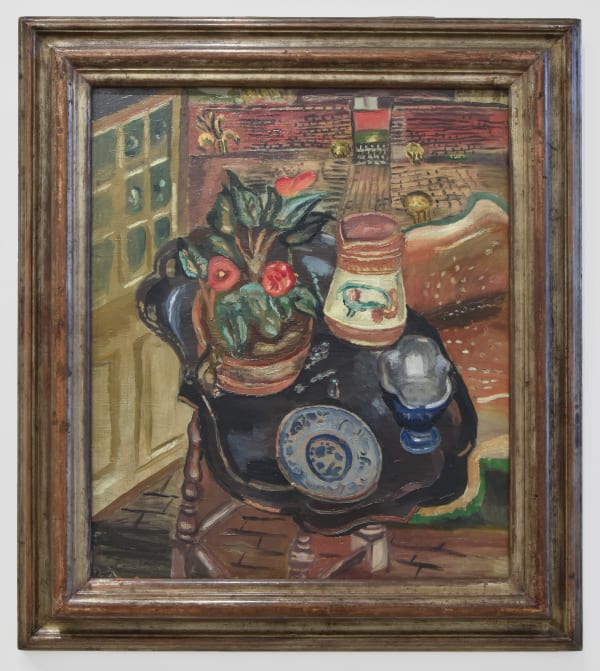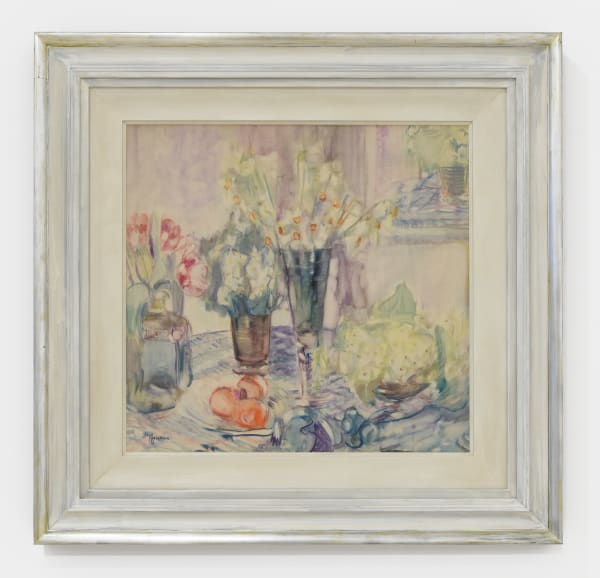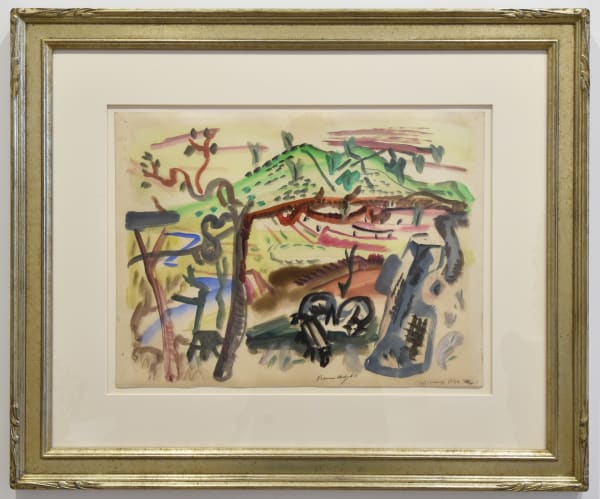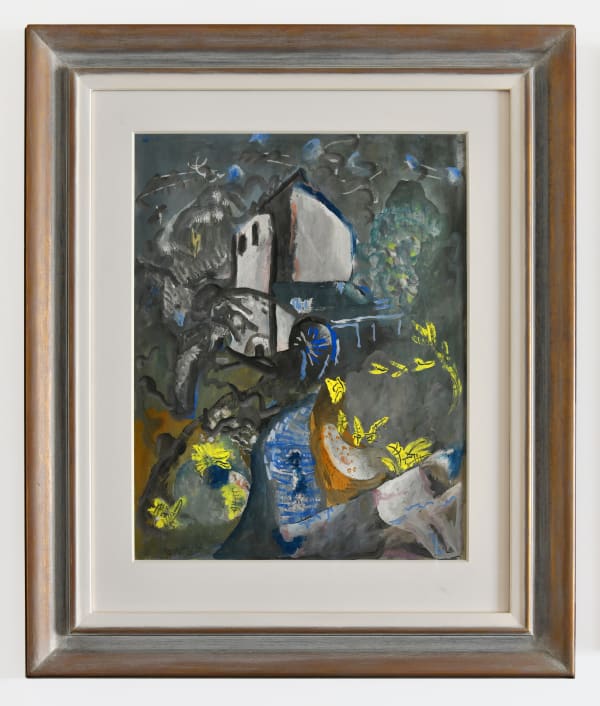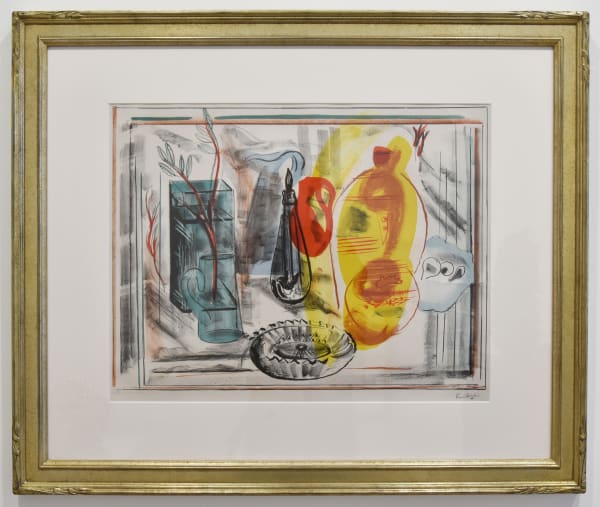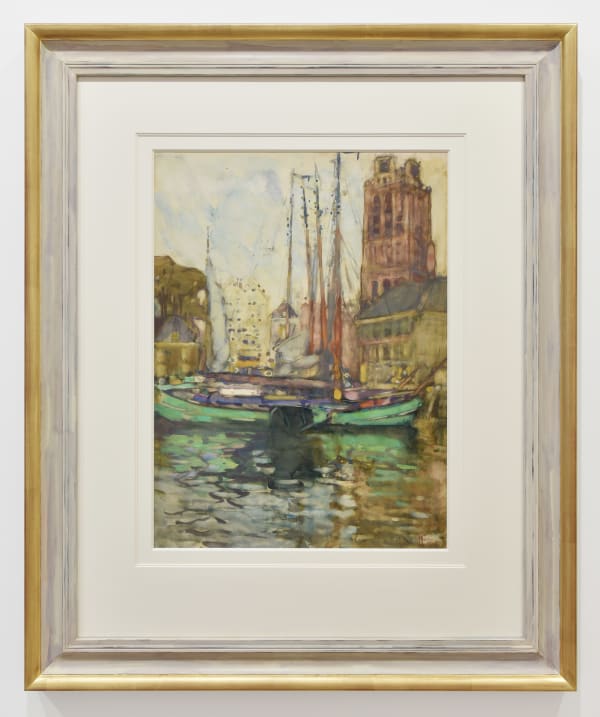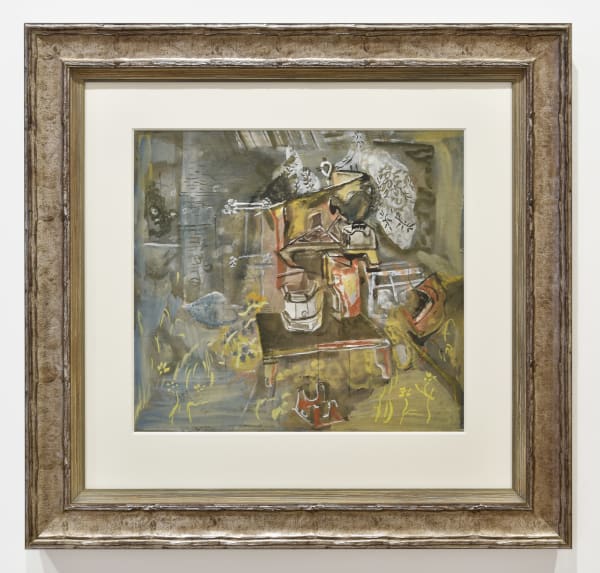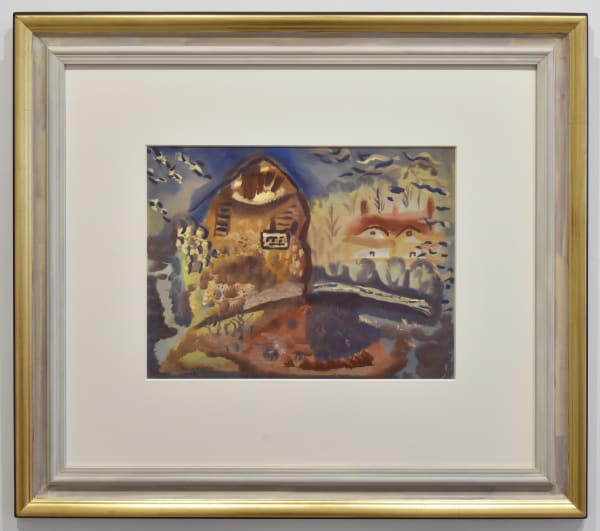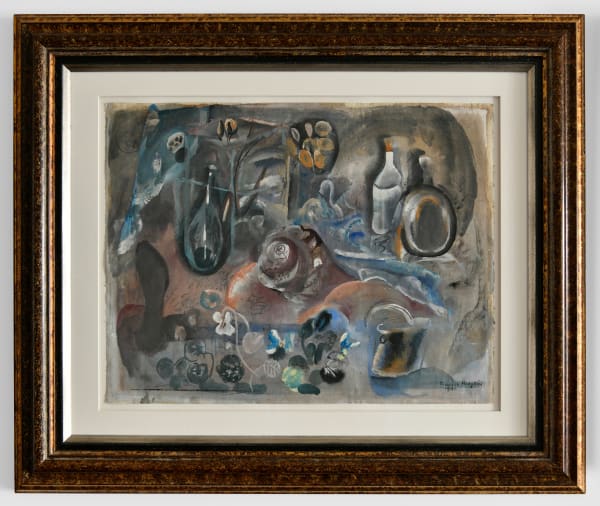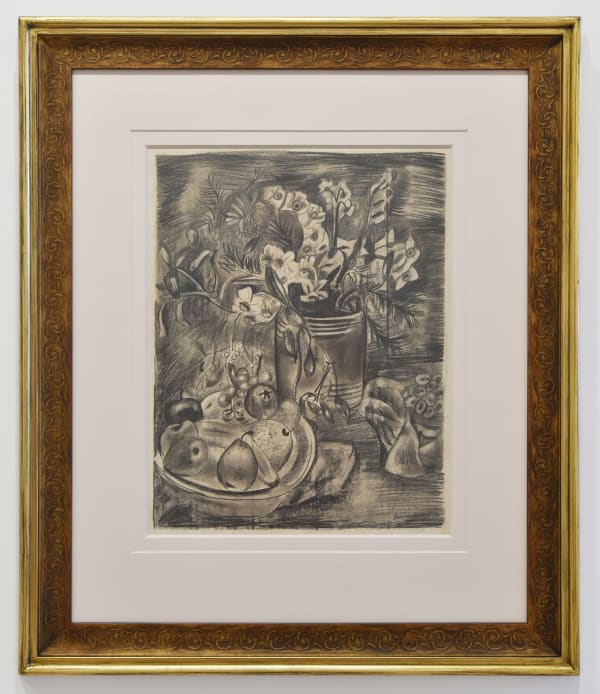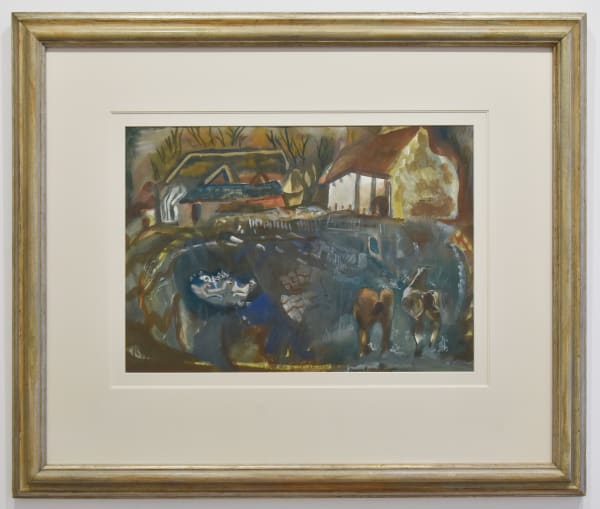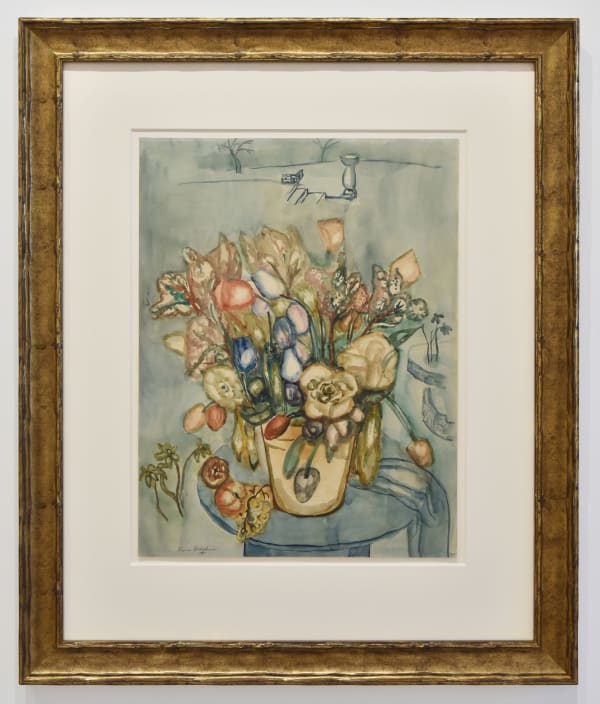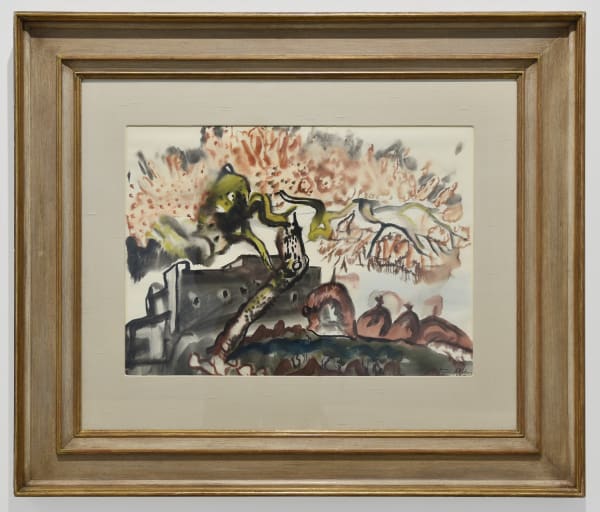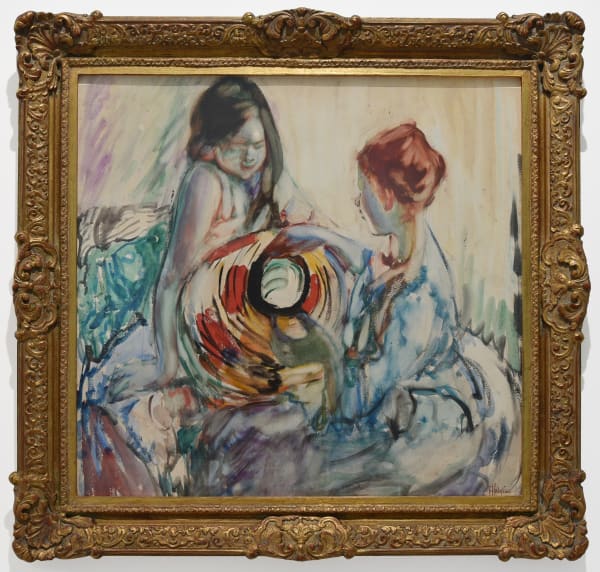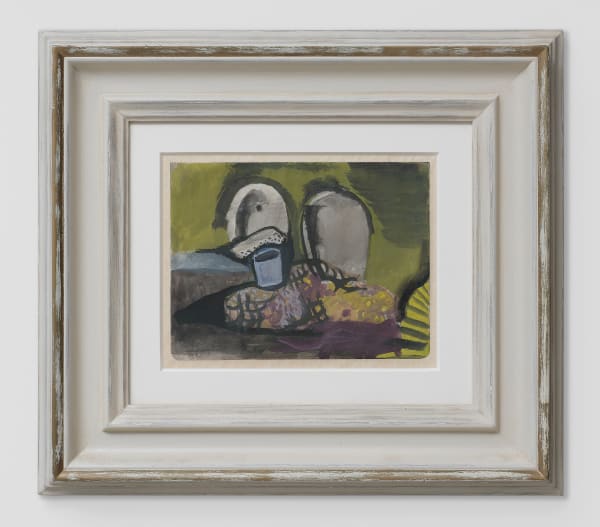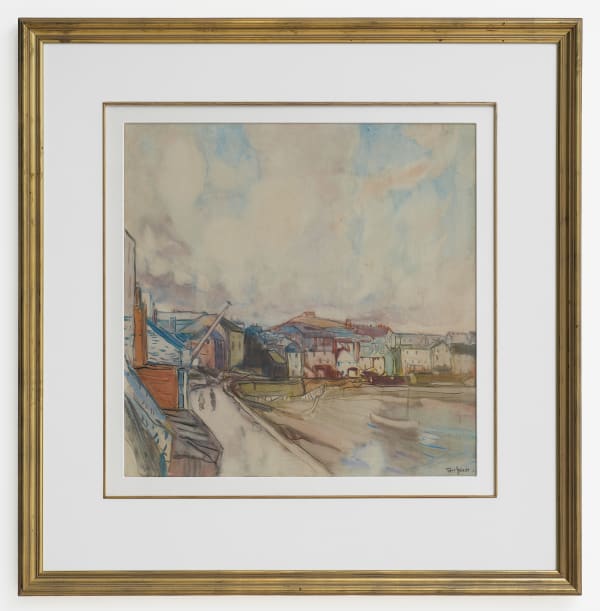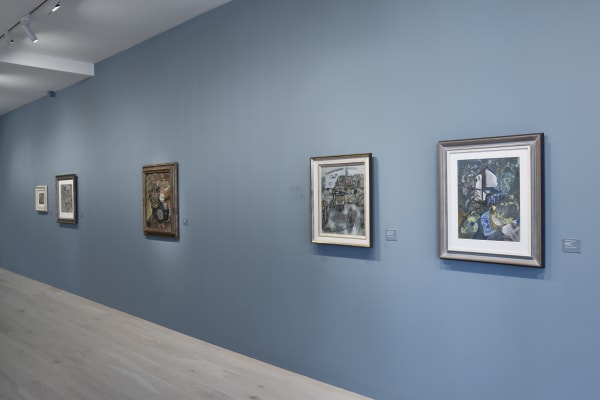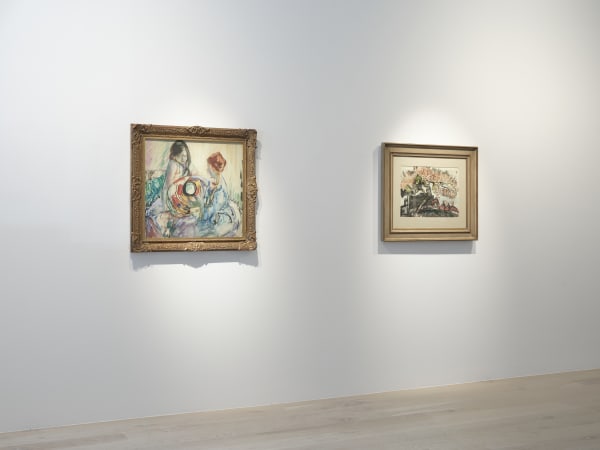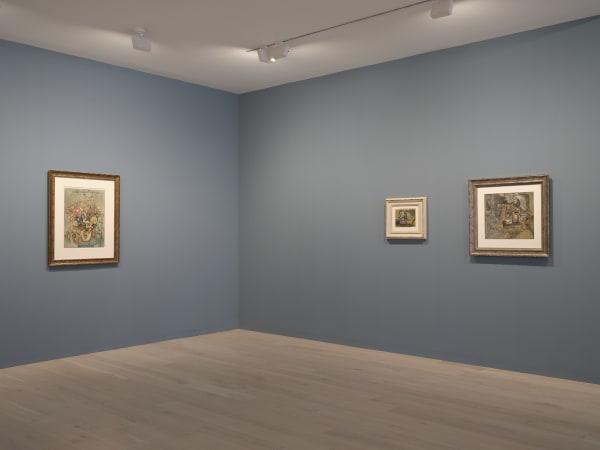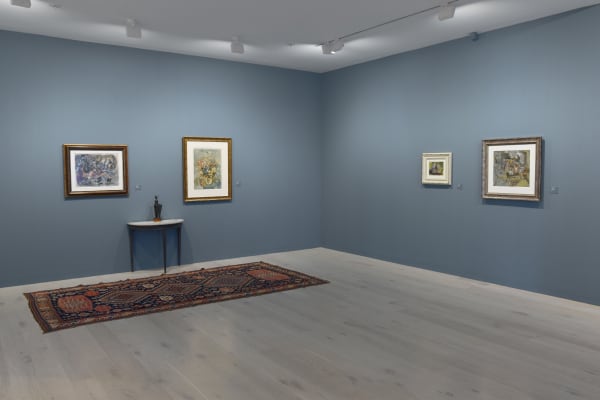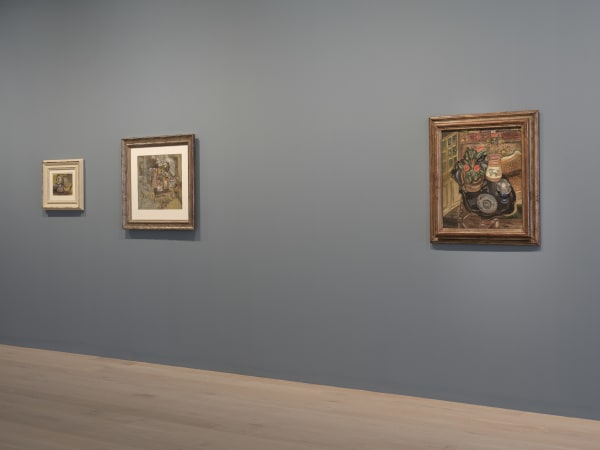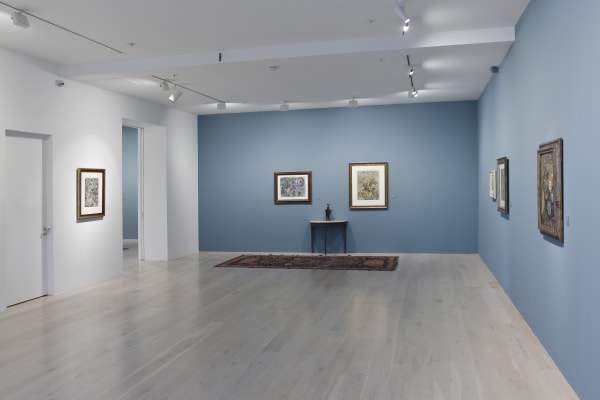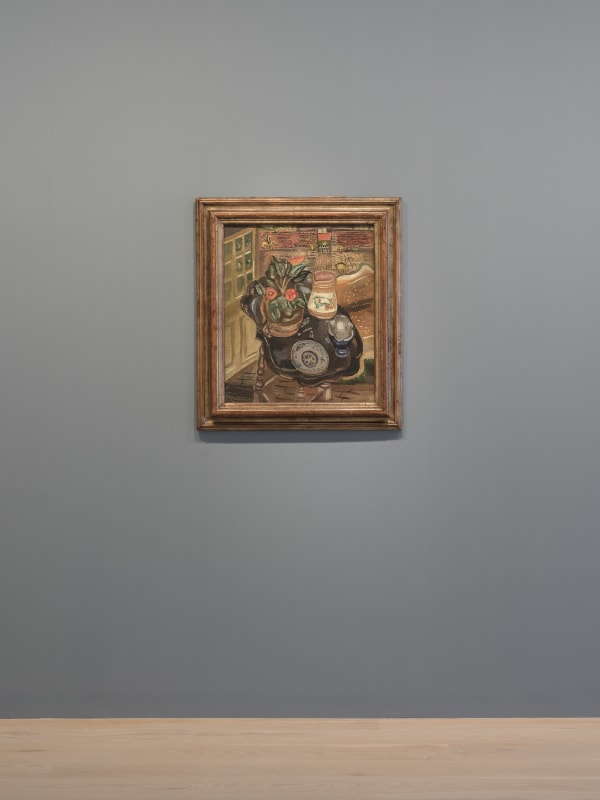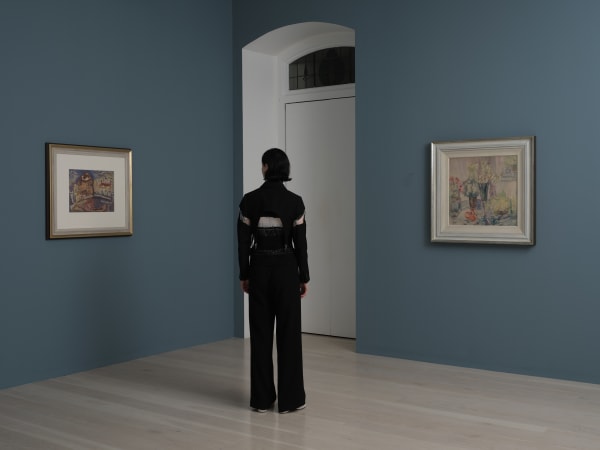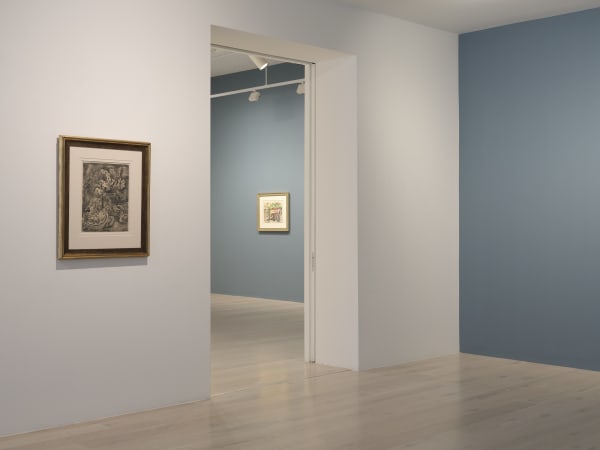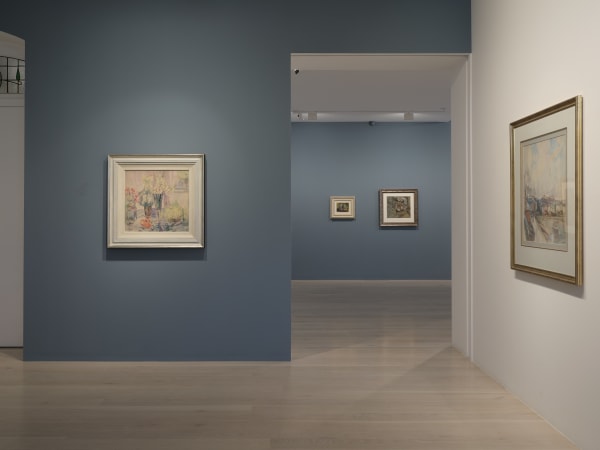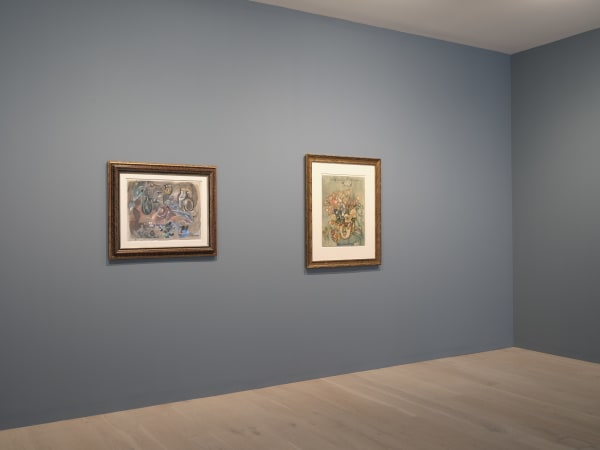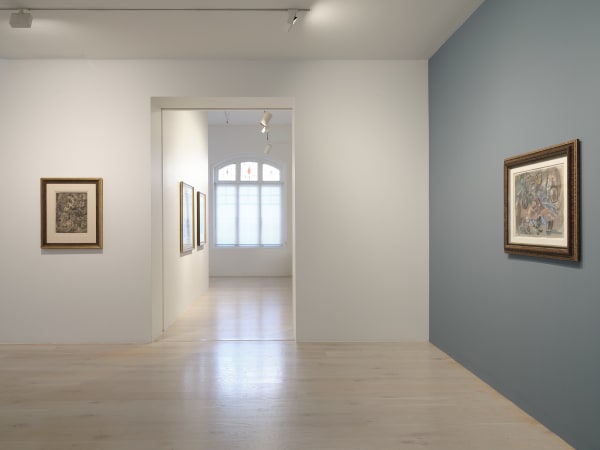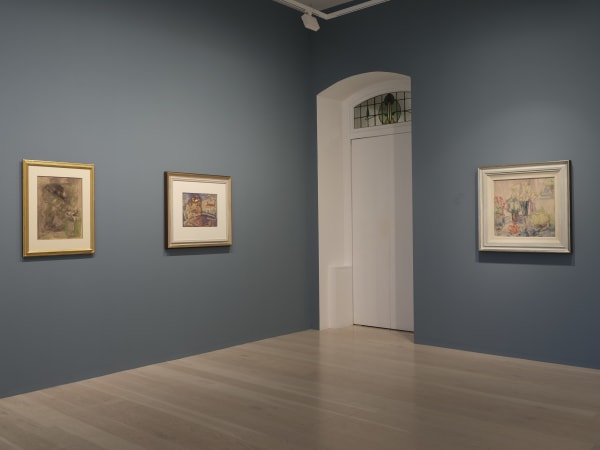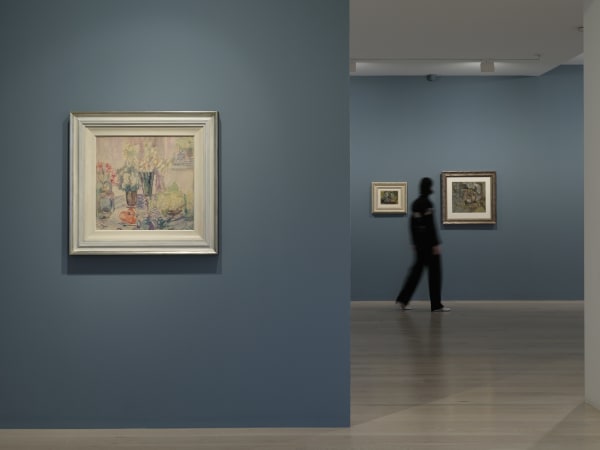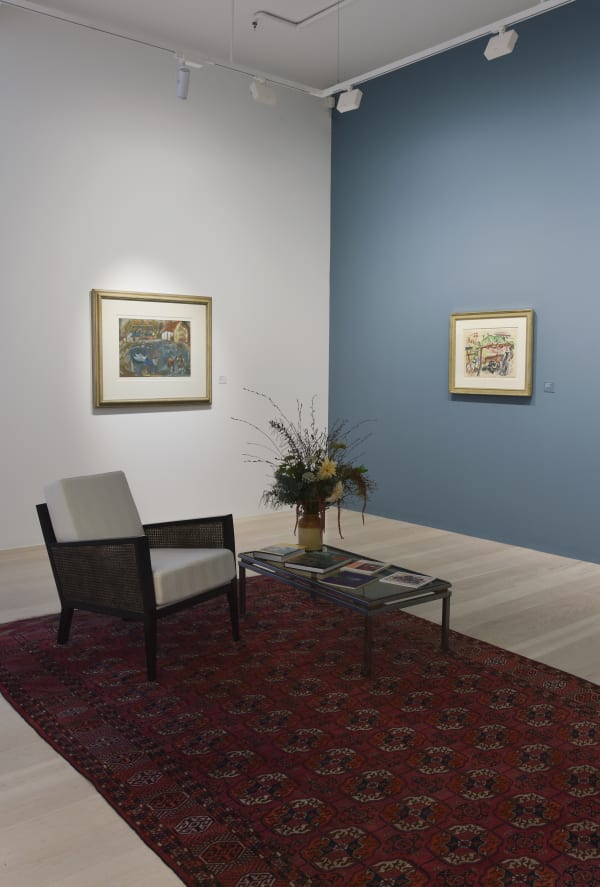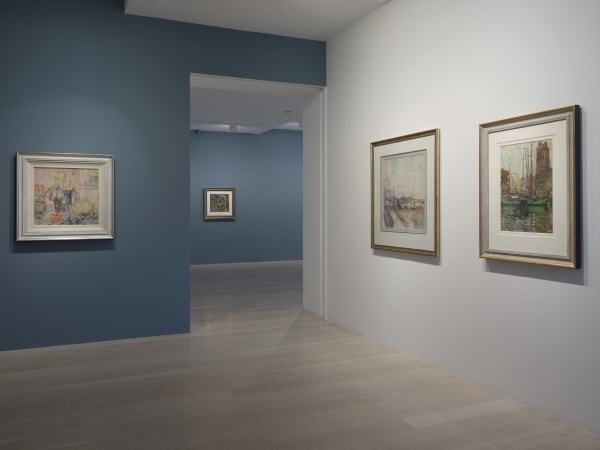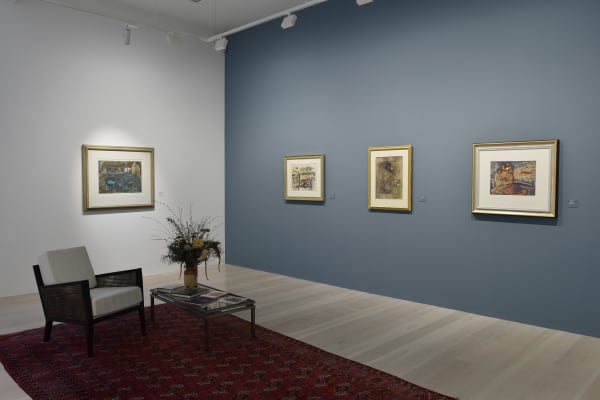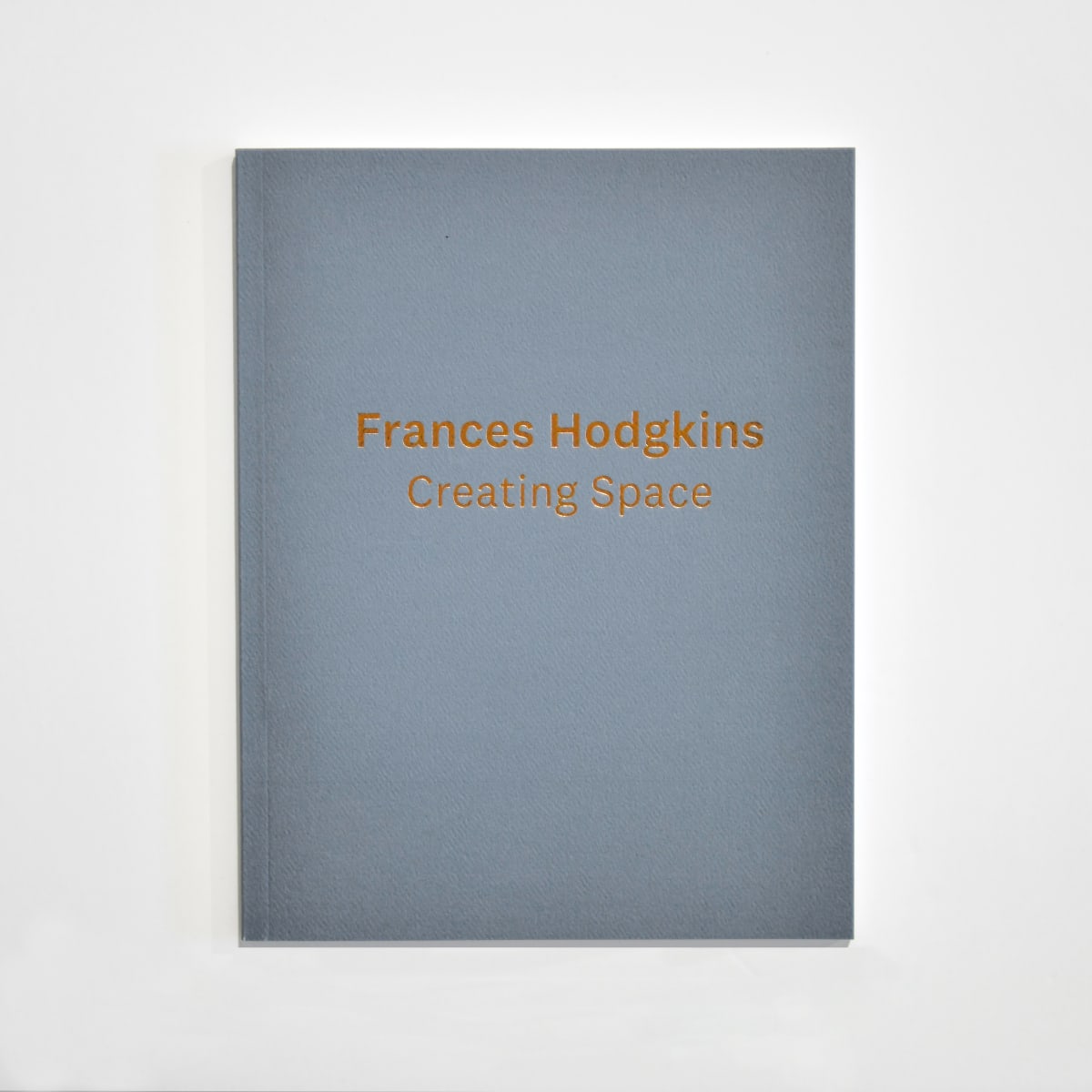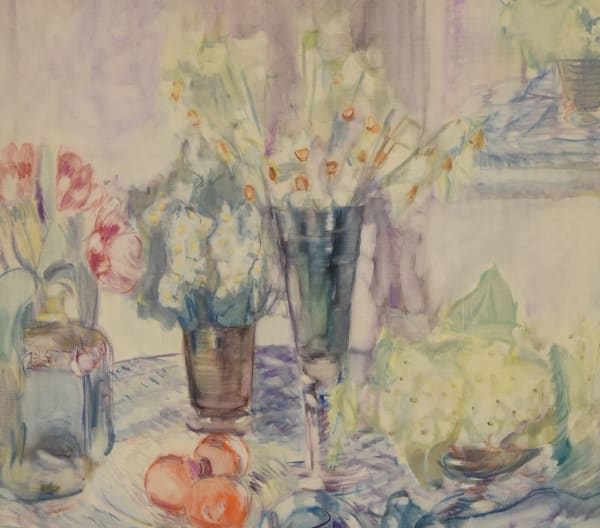Creating Space: Frances Hodgkins
‘It was in 2019, the year which marked the 150th celebration of Hodgkins’ birth, that I walked into Tate Britain while visiting London on business. There, hanging on the feature wall of this enduring institution was Frances Hodgkins’ oil Wings Over Water, c.1932, which every visitor to the museum passed upon entering.’ John Gow, 2025
Frances Hodgkins is one of New Zealand’s defining figures of early modernism. A fiercely independent woman living at the turn of the 20th century, she dedicated her life to art – travelling frequently around Europe, looking at the world around her for inspiration. She developed an excellent reputation in the United Kingdom, France, Australia, and New Zealand, particularly for her skill with watercolour and gouache. While influential during her lifetime, Hodgkins’ stature has continued to grow since her death in 1947.
Hodgkins’ lifelong determination to make art, to continue challenging the conventions of her perceived style, drove her to embed herself in the very heart of the art world in the UK and gain the respect of her peers and art critics alike. Always struggling for money, she relied heavily on her family, and in particular, on her friends and patrons in the UK. They saw her rare talent and backed her drive to make new and challenging works. Just as her audience would come to terms with one body of work Hodgkins would push through a barrier and leap into a new, more challenging style. She was never complacent and was always excited about the next work she was going to create. Creating Space brings together a collection of works in graphite, watercolour, gouache and oil. Travel with Hodgkins from Dordrecht to Dorset, over forty years of her practice, and see her continually striving towards a new visual language.
A newly published catalogue by Gow Langsford will be available alongside the exhibition.
-
 Frances Hodgkins, Still Life, c.1930
Frances Hodgkins, Still Life, c.1930 -
 Frances Hodgkins, Portrait of Mrs Elizabeth Curtis, 1939
Frances Hodgkins, Portrait of Mrs Elizabeth Curtis, 1939 -
 Frances Hodgkins, Spring, c. 1909
Frances Hodgkins, Spring, c. 1909 -
 Frances Hodgkins, Landscape Ibiza, 1933
Frances Hodgkins, Landscape Ibiza, 1933 -
 Frances Hodgkins, The Water Mill, 1943
Frances Hodgkins, The Water Mill, 1943 -
 Frances Hodgkins, Arrangement of Jugs, 1938
Frances Hodgkins, Arrangement of Jugs, 1938 -
 Frances Hodgkins, Dutch Harbour Scene, 1907
Frances Hodgkins, Dutch Harbour Scene, 1907 -
 Frances Hodgkins, Kitchen Range, 1942
Frances Hodgkins, Kitchen Range, 1942 -
 Frances Hodgkins, Abandoned Cottage, Cerne Abbas No. 2, 1943
Frances Hodgkins, Abandoned Cottage, Cerne Abbas No. 2, 1943 -
 Frances Hodgkins, Wild Violets and Honesty, 1941
Frances Hodgkins, Wild Violets and Honesty, 1941 -
 Frances Hodgkins, Narcissus and Fruit, c.1931
Frances Hodgkins, Narcissus and Fruit, c.1931 -
 Frances Hodgkins, Farm Pond, 1943
Frances Hodgkins, Farm Pond, 1943 -
 Frances Hodgkins, Flowers in a Bowl, c.1930
Frances Hodgkins, Flowers in a Bowl, c.1930 -
 Frances Hodgkins, Almond Tree, 1933
Frances Hodgkins, Almond Tree, 1933 -
 Frances Hodgkins, Pleasure Boat, Bridgnorth, c.1932
Frances Hodgkins, Pleasure Boat, Bridgnorth, c.1932 -
 Frances Hodgkins, The Japanese Lantern, c.1912
Frances Hodgkins, The Japanese Lantern, c.1912 -
 Frances Hodgkins, Roots, 1943
Frances Hodgkins, Roots, 1943 -
 Frances Hodgkins, St Ives, c. 1915
Frances Hodgkins, St Ives, c. 1915
Creating Space: Frances Hodgkins' Unique Vision
Text by Mary Kisler
Frances Hodgkins first met British artists Arthur Lett-Haines and Cedric Morris in 1919 in St Ives. They formed a lasting friendship, underpinned by their shared determination to make their mark as modernist artists. Cedric and Lett, as he preferred to be called, came from relatively comfortable backgrounds, whereas Hodgkins struggled for most of her career—having had success in France before WWI, it took much longer to be recognised in conservative England—but she also needed to earn enough to survive. Cedric and Lett had similar struggles in getting their work recognised in the 1930s and ‘40s.
The two men were amongst a group of friends who provided a safety net for Frances until she began to make her reputation at the end of the 1920s. Cedric introduced Hodgkins to fellow painter Ben Nicholson and the Seven & Five Society, who invited her to show with them in March 1929. Thus began her rise to fame in England, where fellow artists and collectors alike were drawn to the individuality of her constantly evolving style, not least in her handling of colour, pattern, and form.
Frances had spent the Christmas of 1929 and the following spring in the south of France, where many of her watercolours and gouaches were infused with the wintery misty pinks and greys typical of the Alpes-Maritimes. She then returned briefly to London before moving to East Bergholt in Suffolk from late June to October 1930, renting Flatford Mill as her studio. The mill had been made famous when it appeared in John Constable’s paintings the previous century and was easily recognisable in the landscape. The half hour walk across the fields to the river Stour was soothing, but initially, interspersed with a few gently rolling hills and meandering rivers, they proved challenging subject matter after the crisp air and craggy peaks of St. Jeannet. Recognising that she must come to terms with the greens and browns of the English landscape, it was the vernacular architecture, with its combination of brickwork, timber, lath, and plaster, often painted in white or pink, that proved her starting point.
Cedric and Lett lived not far away at Pound Farm, Higham, so they were regular visitors. Cedric drove Frances round the countryside in search of subject matter, often taking her back to their farmhouse as respite from her work. They had created the kind of milieu in which a somewhat eccentric but visionary middle-aged woman could thrive, where conversation was always lively, and where the three artists could discuss the latest exhibitions and critique each other’s work. Frances was amused by their somewhat raucous menagerie, which included Rubeo the macaw, in spite of its determined attempts to pluck off the red wig that she wore at the time, but who she preferred to Ptolemy the peacock, whose shrieks disturbed sleepers in the dead of night. The artists painted each other at various times, Frances including Rubeo in the somewhat brooding portrait she made of Cedric in 1930.1 By comparison, Cedric used a brighter palette that captured Frances’ colourful attire, startling wig and determined look in the famous portrait now owned by Auckland Art Gallery Toi o Tāmaki.
A somewhat dilapidated, rambling building, the rear courtyard of the Pound provided the setting for Still Life, c.1930. It’s location is verified by one of Cedric’s own paintings, The Pound, Higham, Suffolk, which was depicted from the slight rise beyond the garden gate, looking back to the bright pink external plaster walls of the house which contrasted with the deep blue back door and its square glass panes.2 Equal attention was given to the flowering shrubs outside the wall as the courtyard itself, for Cedric was in the process of making his name as a remarkable gardener, his richly varied floral paintings demonstrating an intimate knowledge of botanical anatomy.
Frances, on the other hand, has selected the reverse view, focussing on the courtyard as setting, its low brick wall placed high on the picture plane, blocking out the grassy field rising beyond it. The artist has captured the patinated brickwork of wall, path, and courtyard, with only minimal attention to any plants growing within its confines. The view plays cleverly with space, for the open door on the left implies that the artist is seated inside the doorstep, while the scallop-edged folding tray table appears to stand on the bricked floor of the courtyard itself. Possibly reflecting a device she would have observed in the painting of Georges Braque and Pablo Picasso when in Paris, the table is tilted up, its surface covered with decorative items that would tumble into our space if really placed at such a precipitous angle. During that summer, Frances was frantically finishing work for an exhibition to be held at St. Georges Gallery in London, and it was the director Arthur Howell who suggested the title Still Life-Landscape for one of her works. This combining of two distinct genres was to become the focus of many of her paintings in the early 1930s.
From her early days trawling through the markets in France in the first decade of the 20th century, Frances had discovered that hand-decorated peasant earthenware, so tempting to the eye and hand, rarely survived the train journey to her next destination. Instead, she drew on those that came to hand, whether in the home of friends or on the mantlepieces and tabletops of her many lodging places. Here, a flowering begonia thrusting up from its sturdy earthenware pot stands next to a decorated earthenware jug, banded in white, which dances with rapidly painted abstracted green and brown figures. Nearer to the artist/viewer is a tilted Chinese bowl, allowing us to appreciate its delicate blue patterned interior. What may be a tin pedestal dish is lined with silver, its scalloped rim echoing the decorative edge of the tray on which it stands. Still Life seems to be another example of her ability to create a kind of reversal, where we are gently challenged to interpret the spaces she depicts, as she gradually reveals their secrets.
The distinctive brickwork in the courtyard can also be seen as part of the setting for The Painted Chest (Bangor University Collection), which also contains what art historian Linda Tyler believes is a deerskin rug with a green braided border.3 The same flecked surface is shown in Still Life, but here it takes on a more surreal aspect. Placed to the right of the table, the deep crease in the centre of the rug makes it appear as if it is draped over some kind of seat, the green braid trim curved out to suggest a possible leg of the chair, which seems to tangle with the outline of the tray itself. Hodgkins had painted several works that included an ornate sofa with two padded head rests belonging to Manchester friends in the mid-1920s. Her famous Self-portrait, still life, c.1935 also gradually reveals that her favourite items of clothing and accessories are clustered in the comforting embrace of an armchair, so it is not improbable that she is also playing some kind of visual game here.
One likes to think of Hodgkins and her friends sitting in the courtyard in the early summer evening, the seat turned to face the view, the folding table cleared to make room for whatever delicious snacks Lett had made to accompany their aperitifs. Good friends, watching the lengthening shadows creep across the brickwork, reflecting on the work of the day.
Still Life was held for many years in the personal collection of British gallerist, collector, and arts patron Lucy Wertheim, who donated 183 works to the Auckland Art Gallery in 1948. One of the topics much discussed by the three artists was the proposed name for the gallery being established in London by Wertheim, who was to include their work in her opening show later in 1930, and over the coming years. A regular visitor to Suffolk, it took some persuading for her to agree to use her own surname for the gallery, which Cedric, Lett, and Frances strongly encouraged her to adopt. More recently, this painting was also held in the personal collection of auctioneer Dunbar Sloane.
Cedric and Lett opened the East Anglian School of Painting and Drawing in nearby Dedham in April 1937. The school burnt down in 1939, supposedly as a result of a casually flung cigarette butt by young pupil Lucien Freud. Cedric and Lett moved to Benton End, an old farmhouse large enough to accommodate themselves and friends, as well as serving as a new iteration of the art school. Bernard Brown, who visited for drawing classes at the tender age of six, recalls that Freud and Hodgkins, who was visiting in 1940, established a particular rapport, despite their difference in age. Frances had worked in Manchester in the mid-1920s as a fabric designer. She mischievously collaborated with Freud designing curtains to be hung at Benton End, the repeated motif of which showed a stylised house with flames leaping skyward!
DIGITAL CATALOGUE

